
I admit to being pleased that our garden is included in the Saco Bay Garden Tour, this year. It feels like a recognition of our hard work establishing the garden, with the added benefit that we get to share it with the greater community. When I was first approached by the club, I felt I should explain that our garden is not a manicured, bark mulch sort of garden. I was then assured that that would not be an issue and that the garden club is interested in working gardens, maintained by the owners. Ah, good. So, a visit with the club founder and one local newspaper reporter later, we have just two days until the tour. Regarding that newspaper story, I'm so happy another gardener's photo was used instead of mine, and it's clear that, as I feared during my interview, I rambled a bit. Speaking of rambling, it also seems clear to me that our garden is still going to stand out as rather untamed. Doesn't everyone have mint and bee balm growing up through the hostas?
As I said in the interview, I love welcoming visitors into our garden. The comments we hear most are it's like an oasis you don't know is here from the street and that they are impressed with the amount and variety of plants we can support in our small space. Small it is, too, at .11 acre. Here, I'll give you a tour.
First, a little background. When we purchased this house, which is a 120+ year old Italianate, in 2002, we didn't inherit much garden. In fact, with the exception of a couple of lilacs, the sixty foot stretch of beach roses, a small crab apple and some invasive plants like Japanese barberry and burning bush, the rest was pretty bare. Our lot receives intense southerly, coastal light, too, and there was a total lack of shade. Also, the soil in this coastal region is a very sandy loam and what was in our newly purchased lot was mostly dead and basically hard pan.
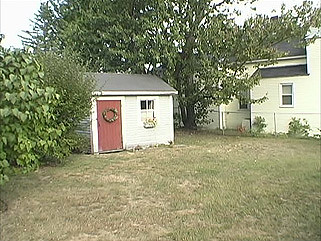

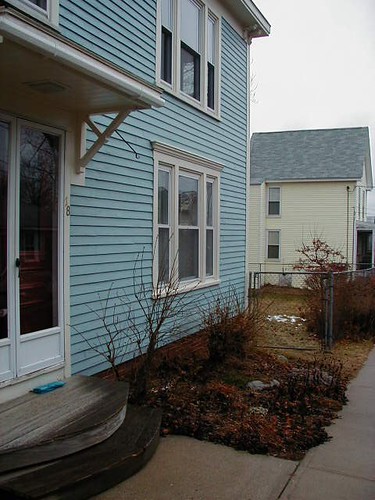
We had a lot of work ahead of us, not only inside the house, but outside as well. Here we are, at Easter, two weeks after our move.
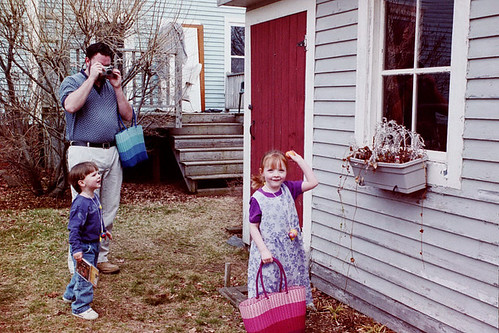
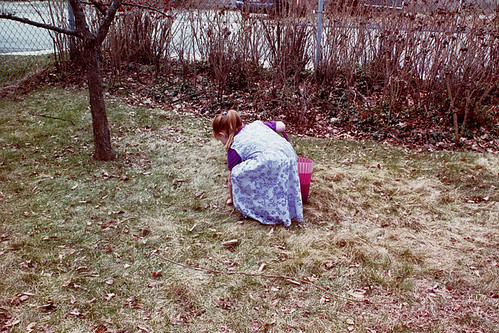
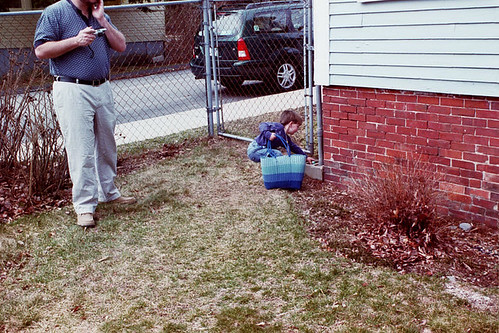
That first summer, we concentrated on the inside of the house, so the garden didn't get much attention. However, this allowed us time to see how the light changed throughout the seasons, how we used the yard and what plants were growing. We did know that we would always choose organic and sustainable gardening sources and methods and, as with our refurbishing of the house, it would all have to be done frugally, mindfully and with plenty of sweat.
Our second summer saw the removal of a large, cankered and ill maple tree in our back corner. We hated to cut down such a large shade tree, but every storm had us worrying for ourselves and our neighbors, should it finally come crashing down.


We did manage to expand the bed along the house, where we planted mostly zinnias, that second summer. I had painted the shed a dark green, hoping to have it recede into the yard a bit. At the foot of the shed, we grew a small, intensively planted horseshoe shaped vegetable garden, that produced a surprising amount of food.

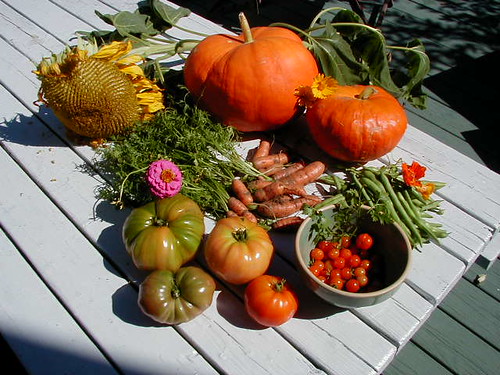
That fall, it was decided that we did not like the location of the garden shed, and with the removal of the maple and the addition of a fence, we had just enough space to add a swing set. That November 1 was an unusually mild All Soul's Day and with the help of friends and family, we hosted a costume party/shed moving day.




By the spring of 2004, going into our third summer in the house, we knew we wanted to grow more vegetables and flowers and begin improving the soil, adding shade, growing green mulch such as clovers, and inviting beneficial insects and birds. We began by building some raised beds from recycled cedar and we used bricks from our cellar to makes paths between the boxes. With seeds and seedlings from Fedco, we grew a beautiful and hugely productive vegetable garden for the next couple of years.
Our annual spring trip to Fedco.
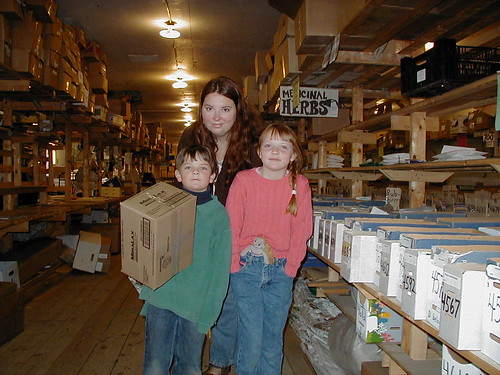

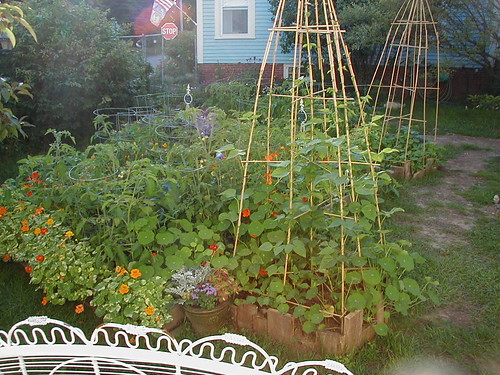

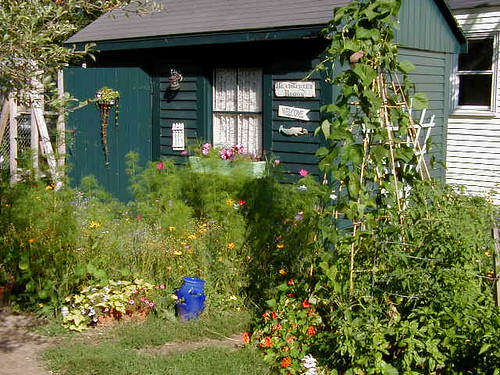
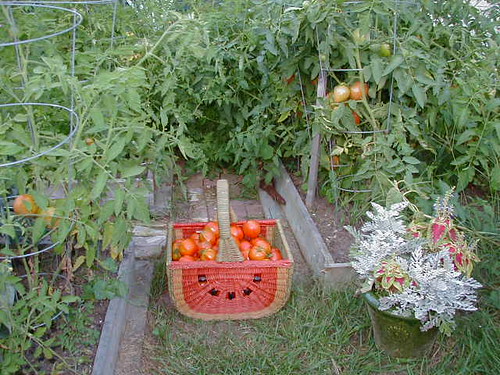

Using some of the same recycled cedar, we wrapped the deck and then went to work building beds around the edges of the deck and house, always with native or native-friendly and wildlife beneficial plants, as well as food-production, in mind. Along the roses, Alex dug and I planted the beginnings of an herb bed. I also claimed some Freecycled day lilies, which we planted along the rather barren driveway, or west side of the house. That was also the year we began removing those invasive plants and replacing them with beds or native trees.
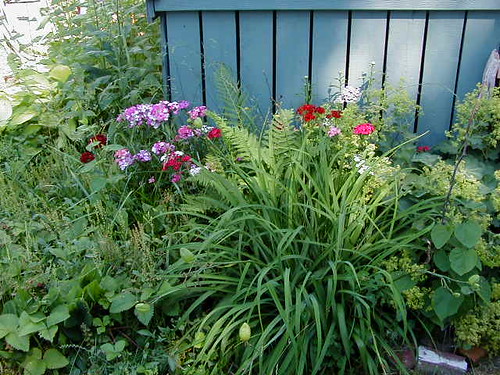





As with the house, I proved to be a chronic rearranger in the garden, also. Using our space well, getting to understand our microclimates and the growth of newly established plants all prompted us to make some changes over time. Like the kids, the garden was growing, we were growing as gardeners and we began to understand what thrived in our space and what did not. The kids always alongside us during home and gardening projects, began to learn more skills and lend their hands and ideas to meaningful work, and work there would be in the next couple of years.
(It amazes me to look at these photos from 2005, now. Note the ash tree in the front bed, especially and you'll soon see what I mean.)





In 2006, with our proximity to the beach and our many sandy visitors, we decided a private outdoor shower was needed. It had to be private enough, with our close neighbors, green and sustainably built, and beautiful and comfortable. Naturally, we designed and constructed it ourselves and the kids were instrumental in that project.
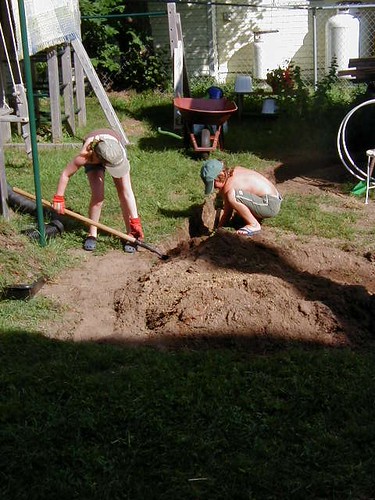

Alex also constructed an outdoor sink, which is one of the most useful gardening tools, ever. Here, you can also see a portion of the stone path that we laid earlier that spring.
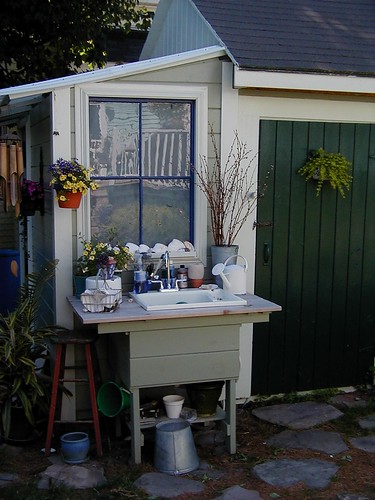
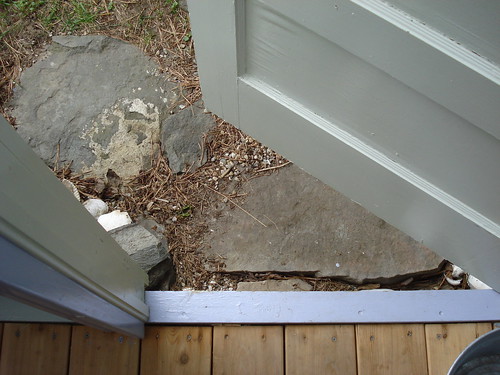
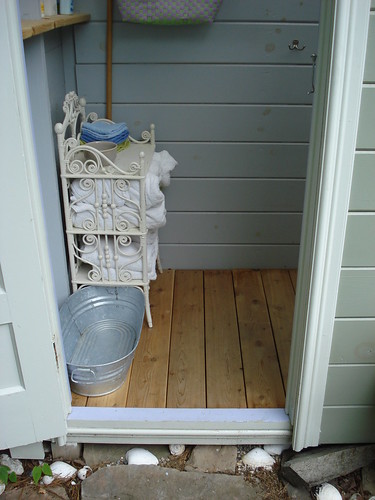
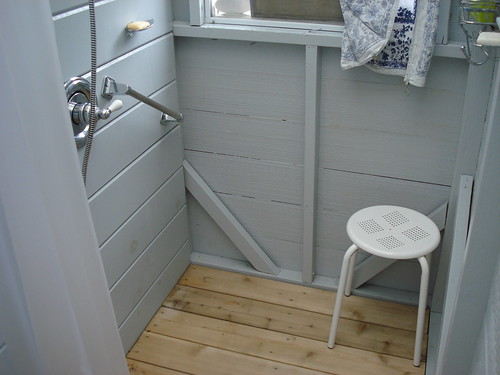
That spring, we also removed the very old, pressure-treated wood from the deck and replaced it with new cedar (also with the help of our friend, Rachael).
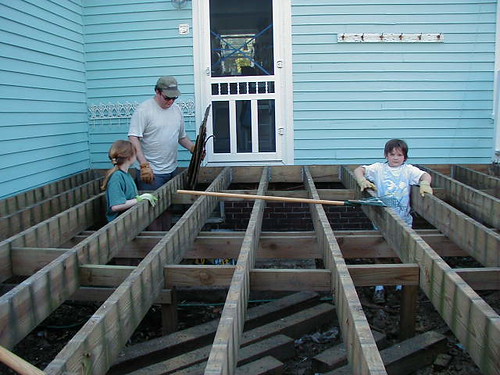

Perhaps because we were putting our energies elsewhere, the garden had a bad year in 2006, and looking at these photos now make me cringe. Like I said, it's all been a learning process, eh hem, facepalm. Hopefully these photos just make the following years look that much better. Of note, however, are the grapevines, new that year, and the ash tree, getting ever larger.




Because the 2006 garden was so cringe-worthy and we had that lovely infestation of fire ants, I believe we brought in from some nursery plants, (another lesson learned), we were ready for some big, big changes in the 2007 garden and with the exterior of the house.
First, we decided that the kids needed a bit more space in our small garden to move about, so we removed the raised beds. We built two boxes that we designated for growing pole beans and we had made tuteurs out of old, yardsale step ladders and some built sections the previous year. Those boxes were moved to the sides of the garden, which created a room like space in the garden.
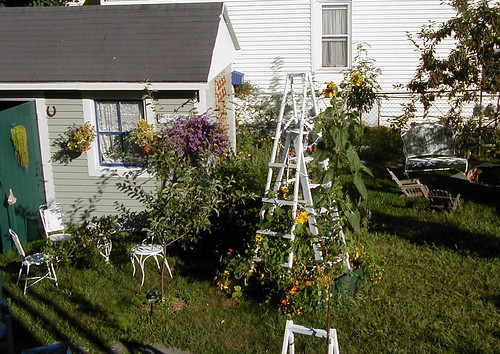
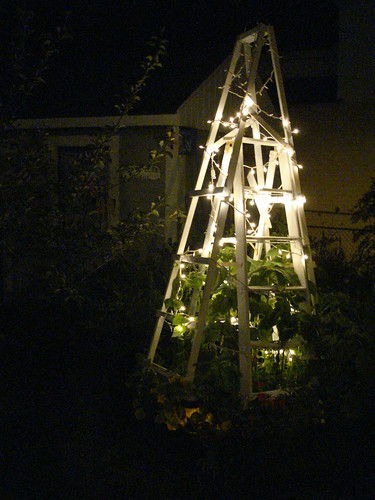
Also that year, the kids worked with us to meet the criteria for designating our garden a wildlife habitat.
From the NWF website:
All you need to do is provide elements from each of the following areas:
•Food Sources - For example: Native plants, seeds, fruits, nuts, berries, nectar
•Water Sources - For example: Birdbath, pond, water garden, stream
•Places for Cover - For example: Thicket, rockpile, birdhouse
•Places to Raise Young - For example: Dense shrubs, vegetation, nesting box, pond
•Sustainable Gardening - For example: Mulch, compost, rain garden, chemical-free fertilizer
Having met all the criteria, we purchased our yard signs. We were also interviewed by the local paper that year about meeting the wildlife habitat certification.

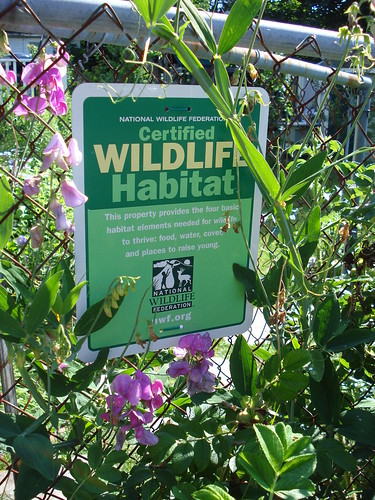
From day one in our house, we knew that someday, as soon as we were able, we would have to do something about insulation, of which there was little, and find a solution for the exterior siding of the house. The siding was as old as the house and so weathered it no longer held onto paint, also not helped by the apparent vapor problems. Many, many hours of discussion, research and planning went into our decision making that spring. We didn't always have the answers, but we knew, regardless of the small repairs or addition of paint over the years, the problems were increasingly evident.



So, as with the interior, we did our best to tackle the outside work ourselves, while preserving the integrity of our old home as best we could, sustainably as possible and always within our means. We decided, after a few trials and errors, that we would restore/refurbish, prime and paint the original trim, which would be kept. Alex would drill all 5,000 holes into the siding*, into which we would blow in cellulose insulation, preferably on the hottest dog days of summer and while looking as fine as possible-which is exactly how it worked out, thank you very much. In addition, he would saw into the soffits and insert twelve attic vents all around the house. Since I have a vertigo problem, Alex did all the work that was over fifteen feet high, and, yes, I hated seeing him up on the scaffolding.
*Correction: edited July 9, 2010. Alex drilled a hole every sixteen inches, two holes for each floor, which amounts to about 5,000 holes (and not 68, as I originally posted, and I must have confused with something else.) He then had to fill each hole and then tape each hole. Apologies to Alex, who worked so hard, so very high up, often into the dark.

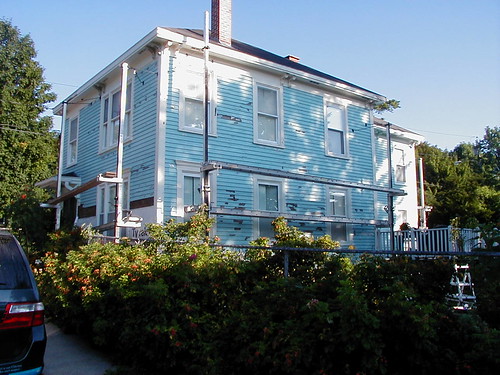

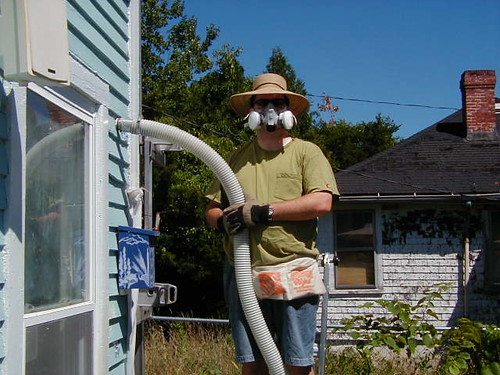

What we determined we could not do (see trials and errors) was remove the old siding ourselves. We tried. It was slow, difficult work, and not that safe.


It was a difficult decision, but we finally did determine, for several reasons, that polypropylene siding was the best option for us. (Not all siding is vinyl. The polymer, or polypropylene siding we chose is recyclable #5 plastic, so when there was any waste associated with our project, we recycled it. This also ensures that if, at any future point the siding needs to be removed, it won't go into a landfill or incinerator but will be recycled.) This was a good choice for us, with our sea air, some extreme winter weather conditions and intense sunlight exposure. This siding choice also allows us to more easily maintain our home and keep it well-insulated.
We chose this product and style for our home.
In order to preserve the Italianate's trim, we would refurbish the trim, but have the siding removed, the house wrapped and new siding applied, by a contractor.



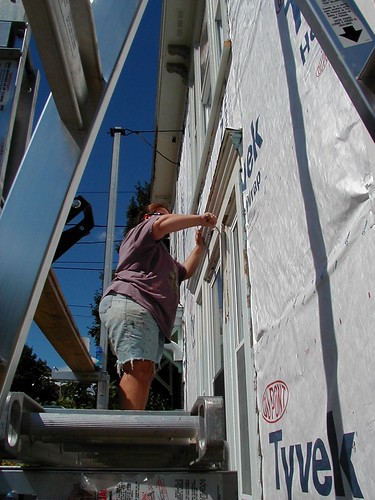
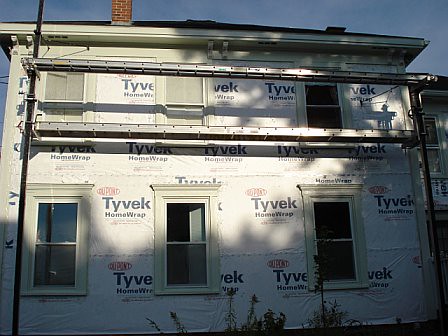

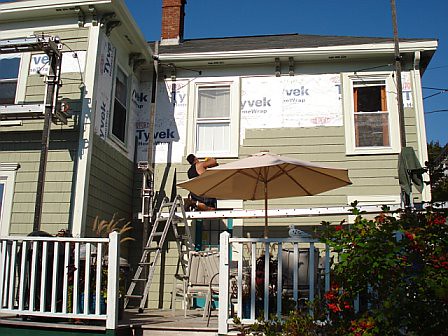
We worked long hours, often well into dark all that summer and then well into fall. Finally, in October 2007, all our trim work was finished, Alex having restored and painted all of the soffits, corbels, windows and high trim, sometimes thirty feet up. Our house was insulated, wrapped, vented, painted and sided. It was done!
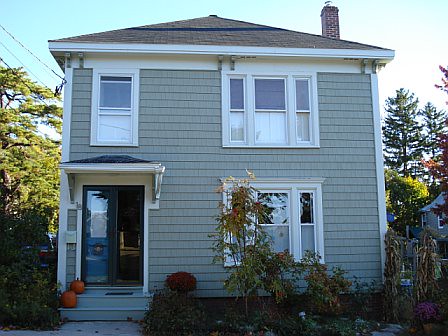
It's amazing to me, each summer since then, that we haven't had to devote entire summers to dealing with peeling paint or rotten wood.
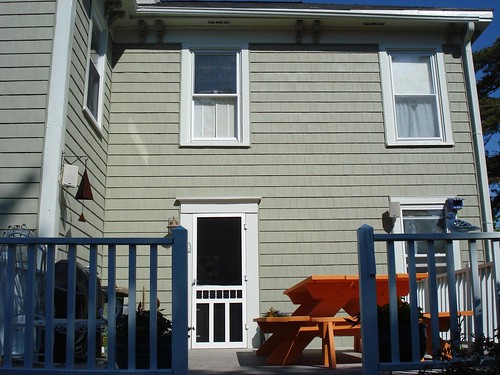
It's been heavenly and well worth the work, even if it meant the day lilies and hostas got trampled under scaffolding that summer. Luckily, those are hardy plants and they soon recovered.


Since 2007, we've worked steadily to plant food-bearing trees and plants in our garden, so much so, that we can now count over thirty such additions to our small space. When possible, we've chosen native and heirloom species. We have three apple, one plum, two pear, one peach, one pie cherry, two beach plum, six highbush blueberry, three viburnum, two showy mountain ash, one magnolia, five lilac, three red quince, one butterfly bush, one crabapple, nine grapevines, multiple hops vines, one silky dogwood, one mock orange, one kwanzan cherry, two black pussy willow, one beauty bush, multiple annabelle hydrangea, one pee gee hydrangea, three nikko blue hydrangea, two azalea, one smoke bush, one spirea, two elderberry, sixty feet of rosa rugosa, one fringe tree, one redbud, one gingko, one witch hazel and two siberian cedars. See many more garden photos here.
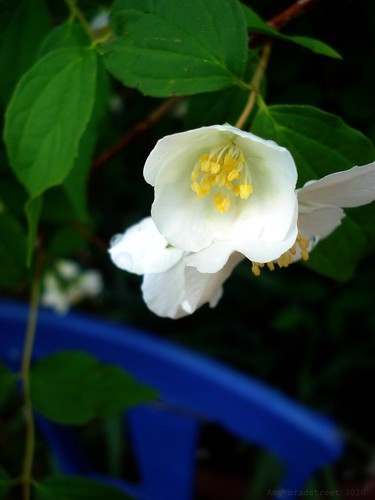
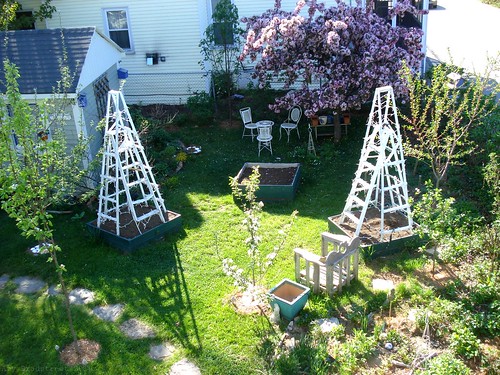
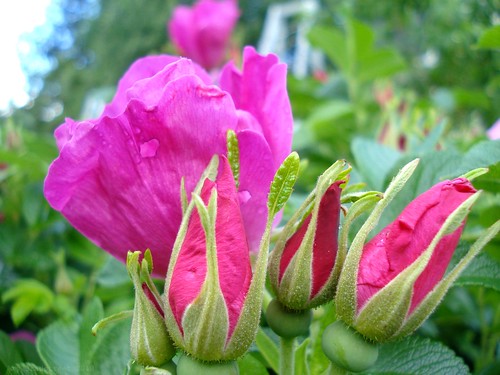

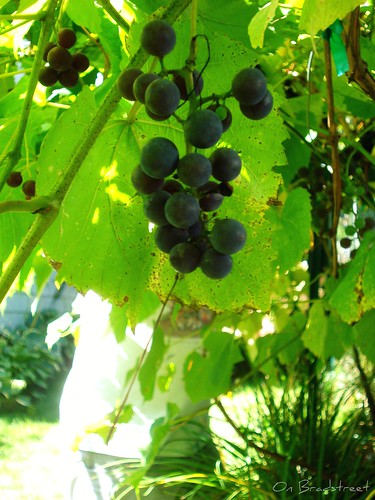
Garden plants include many ferns, hosta, herbs, veronica, tansy, feverfew, lupine, phlox, dianthus, peony, primrose, mallow, ehinacea, rudebekia, lady's mantle, strawberry, ajuga, campion, anise hyssop, bee balm, coreopsis, aster, centaurea, clematis, creeping veronica, bleeding heart, blue bells, potentilla and many more. Every year we add wildflower seeds to the gardens, so often we have cosmo, poppy, cornflowers, flax, pinks and sun flowers popping up everywhere.

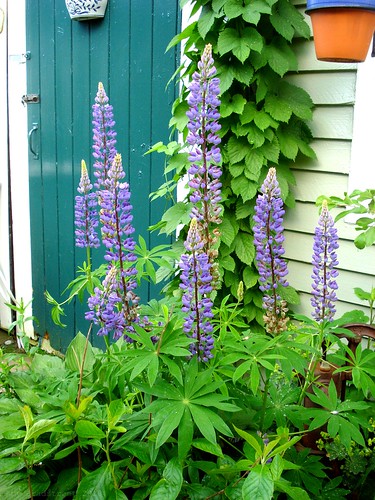

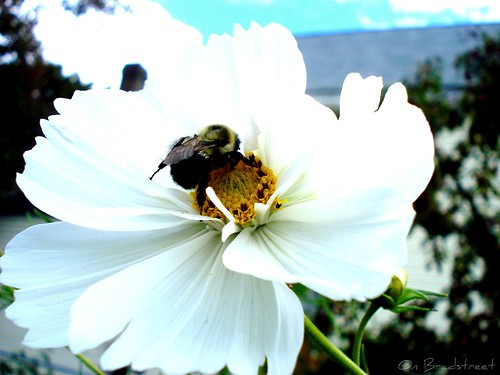

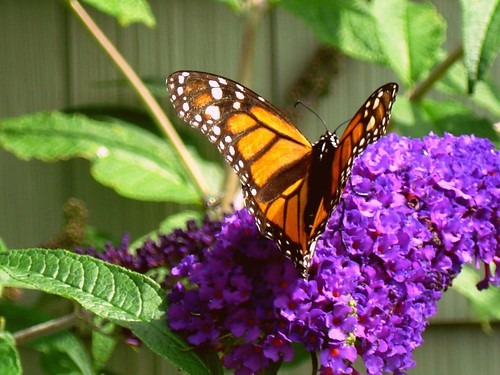
In addition, we also continue to grow some vegetable crops and I think next year we may add some more beds for this purpose. We grow snow peas on the back of the shed, potatoes and rhubarb have a bed, each. We have tomatoes, carrots, radishes and greens in the box bed and pole beans and corn in the bean boxes. We also have lots of peaches, plums, and grapes setting on trees and vines, along with plenty of hops.
Past harvests:
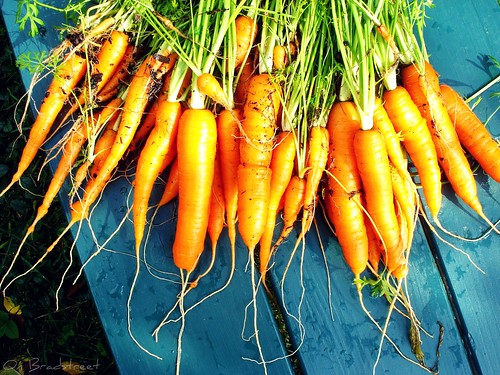




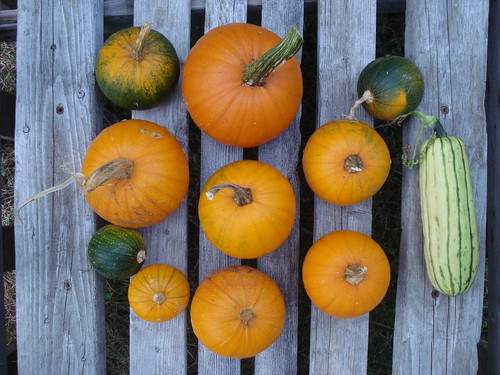
It's fascinating too, to see the wildlife that does choose our garden, in all seasons. Our lot is considered urban and we are in a housing dense coastal community. In the early days of our garden, there was so little life, other than the bees, occassional sparrow and you know, fire ants, that when I spot a creature, who either calls our garden home, or is just visiting, I'm grateful for that glimpse and that we can share our space with them.

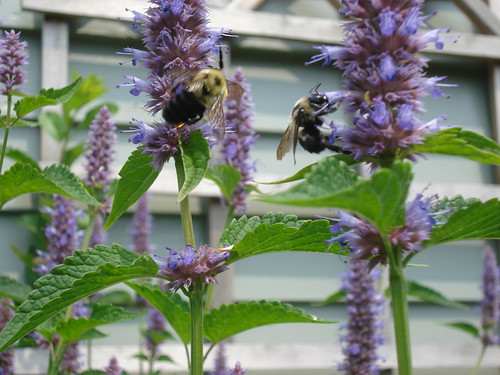

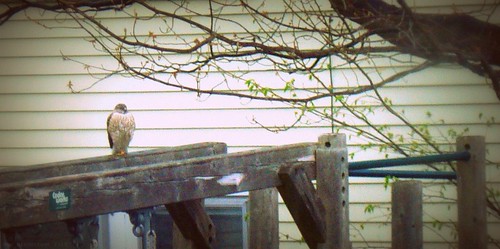

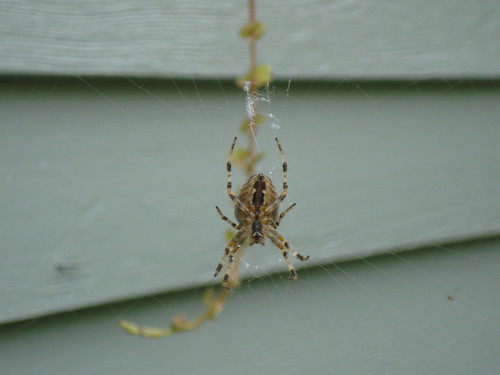
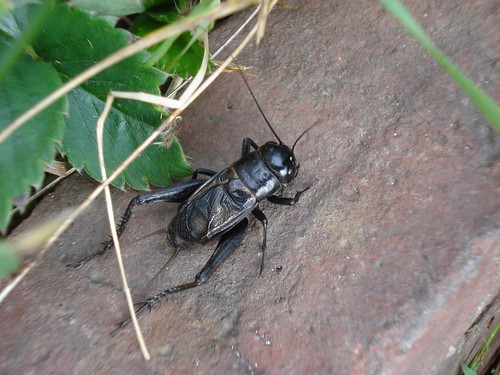

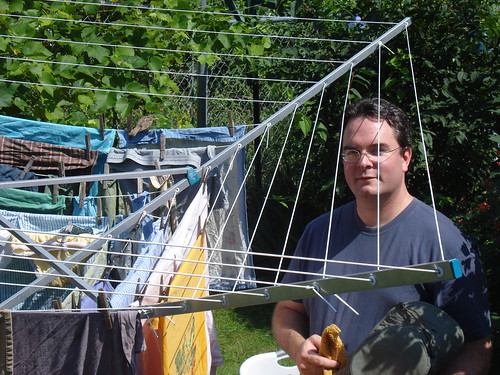
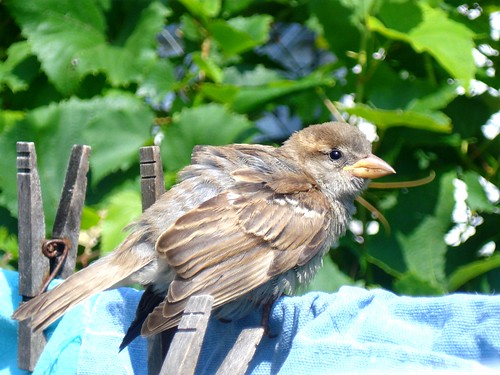

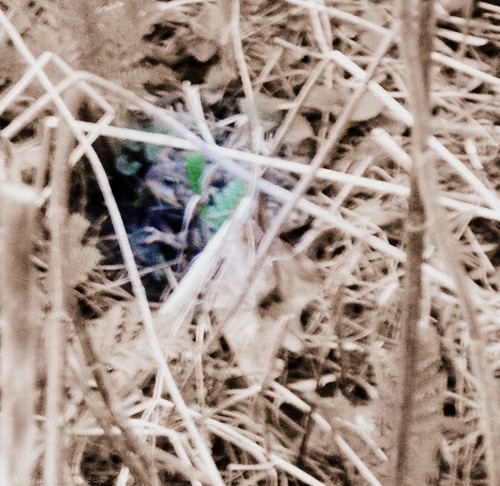

I'm also grateful for our garden and the world of discovery it provides for all of us, but the kids, especially. They have played, imagined and daydreamed here. They have also learned important skills here, of planting, composting, growing, harvesting, seed saving and caring for their small corner of this earth.
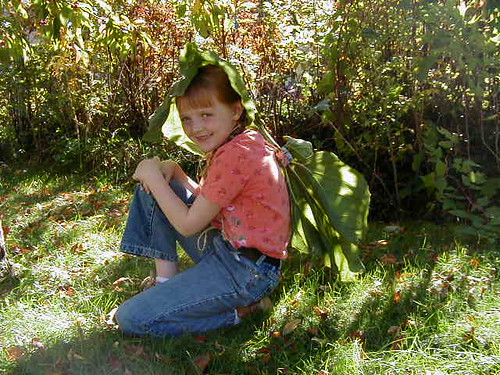


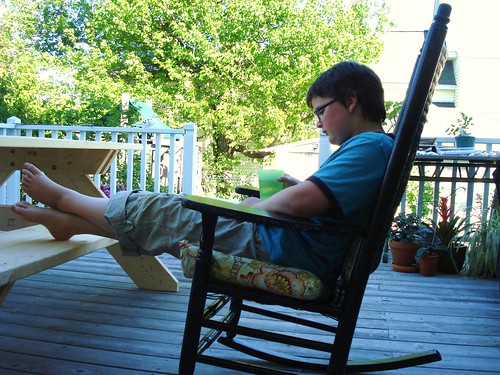
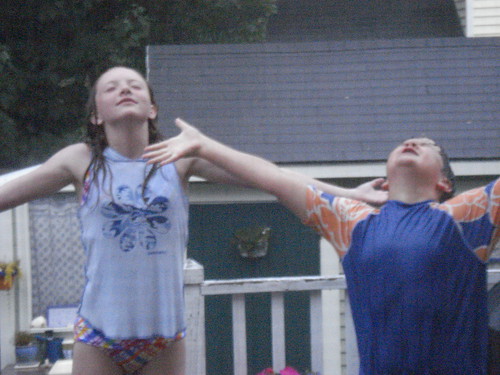
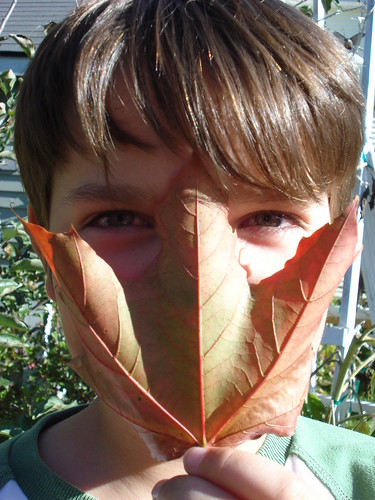

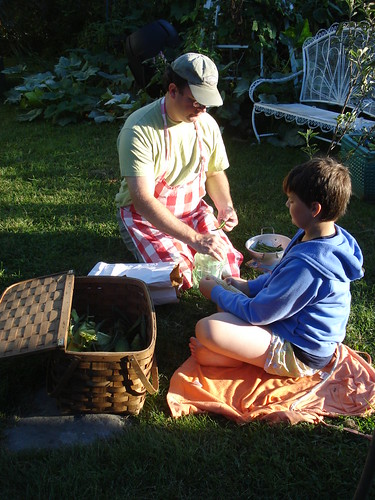
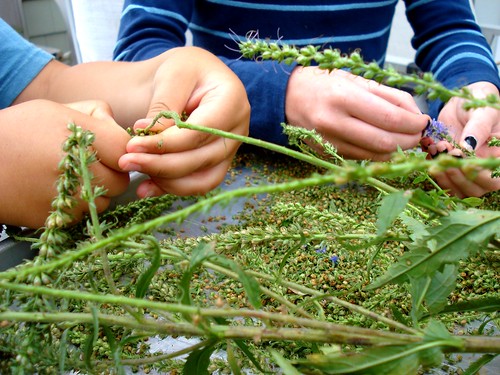
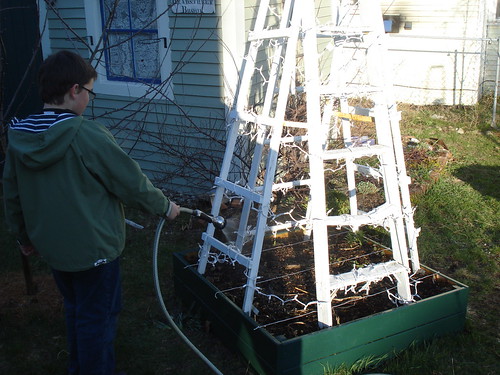
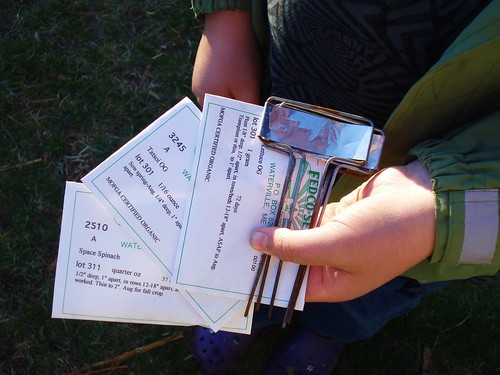
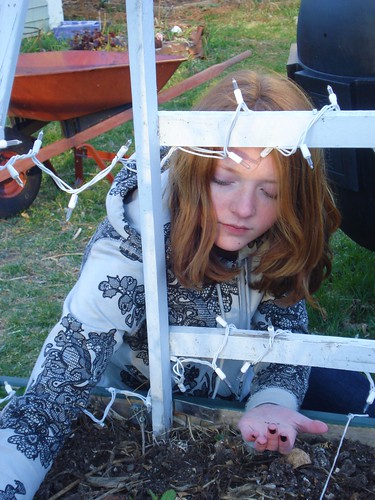
Finally, our garden is our touchstone. The place where memories take root, perhaps even more strongly than they do within the home. Each season is a reminder that the Wheel is ever turning, it keeps us connected to nature, to the passing of the old and the arrival of the new. Never is a season dreaded, as each offers its own rewards, its own unique beauty, magic and gifts.




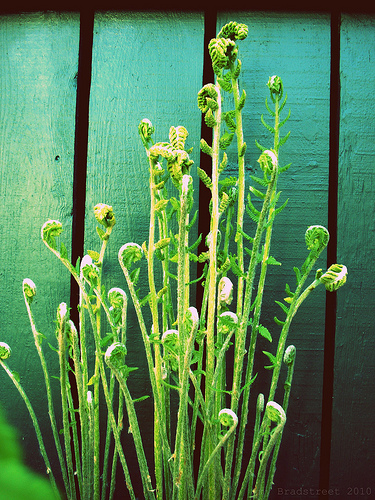
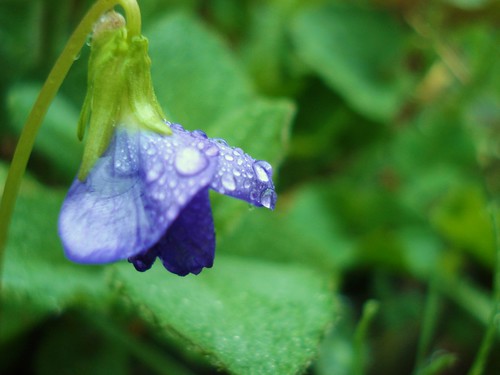



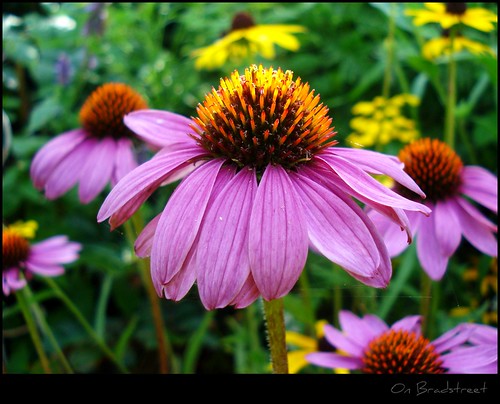
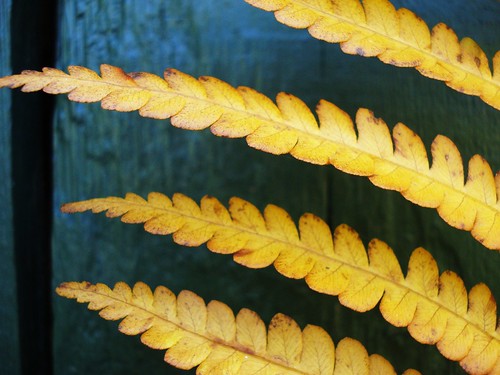



So, if you've read this far, I thank you. Now in our ninth summer in our home and garden, it's so wonderful to enjoy the maturing plants and trees, and yes, make additional changes. The swingset is gone, living with another family now, as the kids decided they had outgrown it. In its place is the newly built firepit, so new I don't have photos of it yet. I'm sure with the hours before and during the tour, I will take more photos and will be sharing them here. Until then, happy gardening!
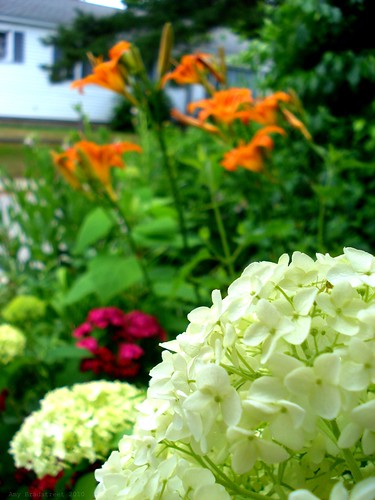
Oh, I love it! I have seen snippets here and there of your garden, but a full tour --- gorgeous. Your garden is definitely an inspiration. What you have done in a natural way but in an urban small lot is just amazing. Wish I was closer to get a real live tour. I love also seeing photos of the kids growing up with that garden. A childhood to remember, for sure.
ReplyDeleteAnd yes, I have lemon balm and mint peeking through every single corner. I have a whole back full of spearamint (and I never planted spearamint!). :) And my garden is looking quite wild right now.
Thanks so much for this! I am overhauling my backyard garden completely this year and I remembered seeing pics of your garden and so decided to check your blog for something like this post. So inspiring. Can't wait to see what you do with the homestead!
ReplyDelete